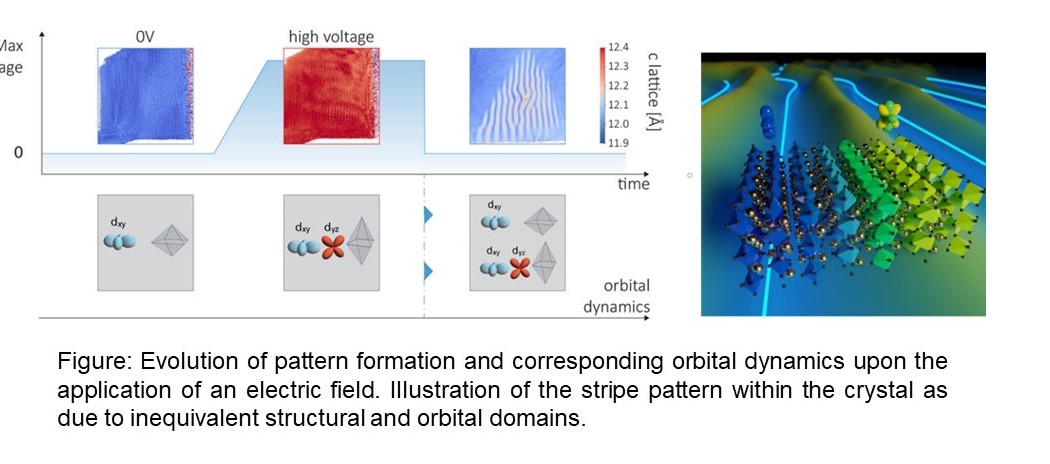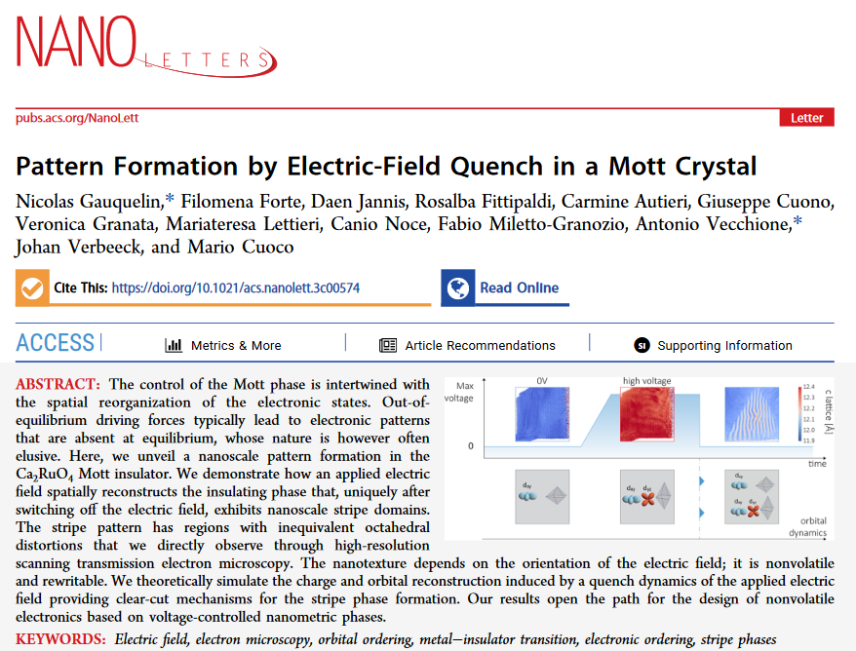An international team which includes a large group of researchers from CNR-SPIN, together with scientists of MagTop Research Centre in Warsaw, University of Salerno, and University of Antwerp has uncovered new quantum effects that can control the nanoscale pattern formation in Mott crystals. The discovery of the physical laws underlying these properties could be used for the development of room temperature non-volatile electronics based on voltage-controlled nanometric phases and, in perspective, could be integrated with photonic functional devices too.
It is known that Coulomb interaction can block charge motion and turn metals with large electron density into so-called Mott insulators, a phenomenon with a broad impact in condensed matter physics for both fundamental and technological outlooks. Apart from the control of the Mott phase through external perturbations, one of the main challenges in this field deals with the spatial reorganization of the involved electronic states.
To this end, we discover that a nucleation of a robust nanoscale striped phase can be achieved by switching off the electric field after driving the insulator into a metallic-like uniform configuration. This spectacular phenomenon has been observed for the first time in a Mott insulator by profiting of the high expertise in the synthesis of Ca2RuO4 single crystals by the group at CNR-SPIN.
The generation and visualization of the nanoscale pattern have been achieved by the team in Antwerp through the use of in-situ biasing in the electron microscope. They succeed in applying a pure electric field and measuring with nanometric spatial resolution the response of the sample to the stimulus in-operando. Then, a remarkable reorganization of the insulating state has been directly visualized, demonstrating how the quench of the electric field leads to the formation of nanoscale stripe domains. Intriguingly, this pattern can be erased, by applying again an electric field or by temperature, and re-established with the same voltage quench protocol.
The theoretical team at CNR-SPIN, in collaboration with the groups at MagTop and at the University of Salerno, has disclosed the mechanisms underneath the nanoscale electronic reorganization. They unveil how electrically driven orbital dynamics and electrically active interfaces with different structural properties cooperate to yield stripe patterns in Mott crystals. These findings pave the way for the design of novel orbitronics effects in Mott insulators.
The next step is to deepen the insights on the interplay of orbital mechanisms and interface electric polarization to control the nucleation and dynamics of the striped phase.
The research results have been published in the journal Nano Letters - “Pattern Formation by Electric Field Quench in a Mott Crystal”, by Nicolas Gauquelin, Filomena Forte, Daen Jannis, Rosalba Fittipaldi, Carmine Autieri, Giuseppe Cuono, Veronica Granata, Mariateresa Lettieri, Canio Noce, Fabio Miletto-Granozio, Antonio Vecchione, Johan Verbeeck, and Mario Cuoco,
https://pubs.acs.org/doi/full/10.1021/acs.nanolett.3c00574



